pectus excavatum baby surgery
We may recommend observation for mild to moderate cases and surgery for more severe or complex cases. Pectus excavatum is where the sternum and ribs develop abnormally causing the sternum to drop inward toward the spine and produce a caved in or sunken appearance of the.

Pectus Program Prisma Health Upstate Childrens
Pectus excavatum is the most common chest wall deformity occurring in about one in 500 children and accounting for more than 90 percent of congenital chest wall deformities.

. It occurs mostly in boys and frequently more members in a family are affected. One out of 400 babies is born with a chest wall that doesnt form properly and becomes concave. Surgical Correction of Pectus Excavatum in Kids.
Fast Facts About Pectus Excavatum Repair Surgery. At CHOP we offer two different treatments for pectus excavatum. Your childs surgery will take place at Childrens Hospital.
An 11-month-old girl was diagnosed with pulmonary atresia with intact ventricular septum and symmetrical pectus excavatum that had developed after prior palliative operation. The treatment of pectus excavatum is dependent upon the severity of the defect and your childs symptoms. In certain situations the pectus deformity requires an open operation to remove the abnormal cartilage that connects the ribs to the breastbone.
Surgery to expand the chest wall can eliminate many symptoms. The surgery involves removing a portion of the deformed cartilage and repositioning the breastbone. While most patients do not have symptoms those with severe.
If the deformity is causing physical or. In some cases surgery can treat pectus excavatum. A shallow excavatum is unlikely to affect the heart or lung functioning and your childs appearance will remain normal.
This is typically accomplished by repositioning the breastbone. Length of stay in the hospital is determined primarily by pain control. Pectus excavatum affects about one in 1000 children and is four times as common in boys as in girls.
A baby playpen all can be useful spaces for the restricted time of recovery. Adults have either had to live with it or face major more complicated operations. Two types of surgery are used.
Although kids are born with it it may not be apparent for the first. Pectus excavatum is the most common congenital birth defect. 1 2 Pectus excavatum may be associated with connective tissue disorders such as Marfan and.
Most operations for pectus excavatum are performed by inserting a metal bar under the breastbone. As mentioned above from 1949 to the late 1990s it was recommended that the younger the patient the easier the open procedure for both the patient and surgeon. Pectus excavatum is a condition in which instead of being level with the ribs the breastbone sternum is sunken so that the middle of the chest looks caved in.
We performed a transannular patch repair and atrial septal defect closure. Outpatient surgery and anesthesia can be uncomfortable painful. The pediatric surgeons at CHOC perform the Nuss procedure to repair pectus excavatum.
His diagnosis is Pectus Excavatum. Pectus excavatum a deformity of the sternum and ribs caused by an unbalanced costochondral hypertrophy is a congenital abnormality with a prevalence of 1 per 1000 patients. If your childs condition needs medical help besides home treatment you and your doctor can choose surgery as one of the fixing solutions.
The Nuss procedure is a newer minimally invasive procedure that dramatically reduces the appearance of incisions and the time spent in the operating room. At this time surgery is the only option that works. The surgical repair of pectus excavatum is a painful procedure.
He will undergo surgery on June 1st 2022. For children who need surgery we almost always place a bar inside the chest to push up on the indented breastbone. At the time of surgery an epidural catheter will be placed in your childs back for continuous local anesthesia and will stay in place for several days.
Both or just one side of the breastbone may be affected. The purpose of this is to look for valve problems that can be associated with pectus excavatum. Kids with mild pectus excavatum who arent bothered by their appearance and dont have breathing problems typically dont need treatment.
The goal of surgery to correct a pectus excavatum defect is to improve breathing posture and cardiac function in addition to giving the chest a normal appearance. This is a minimally invasive surgical procedure. Nuss described a new technique that lifted this malformation from inside the thorax with a bar specifically designed for such a condition.
Our surgery team has seen hundreds of children with pectus excavatum and can help you decide the best options for your child. If your child has a mild case of pectus excavatum theres probably no reason for surgery. With pectus excavatum the tissue ribs and sternum grows abnormally causing the sternum to go inward to form a depression in the chest.
This causes a depression in the chest that can range from mild to severe. Pectus Excavatum Surgical Repair. Simultaneously to prevent postoperative right ven.
Before the surgery your kid needs an Echo of the heart. The ideal age for surgical treatment of pectus excavatum is between 12 and 18 years. During one of his follow-ups it was found that his ribs are pressing against his heart and the time for surgery is now.
This is called the Nuss procedure. During this procedure small incisions are made on each side of the chest to allow the surgeon to insert a metal support bar underneath the sternum to reverse the depression in the chest. In most cases surgery is not indicated.
The most commonly performed surgical treatment for pectus excavatum is the Nuss procedure. How Is Pectus Excavatum Treated. Kids get it.
My nephew will be in the hospital for approximately one week and then healing at home with strong pain medication for 4-6 weeks. Pectus excavatum is a genetic disorder. Anesthesia and care at time of surgery.
Thus far the treatment of pectus excavatum was classical open Ravitch surgery which took the ribs apart from the sternum and then rebuilt them in an orthotopic position. Although the incidence of congenital pectus excavatum can be debated the more important question is at what age should one offer surgical repair in a patient with a severe pectus excavatum. The open or modified Ravitch procedure.
Kids with pectus routinely have surgery. Pectus excavatum is an anatomical deformity of the chest wall that kittens and puppies are born with. Pectus excavatum is caused by the abnormal growth in the chest of the connective tissues cartilage that attach the breastbone sternum to the ribs.
The pectus excavatum repair is a surgery to fix the shape of the bone in the middle of the chest called the sternum or breastbone so that the lungs and the heart are not squeezed by the inward curve of the chest. The minimally invasive repair or Nuss procedure.

Thoracic Surgery Program Johns Hopkins All Children S Hospital

Pectus Excavatum And The Nuss Procedure Youtube

Department Of Surgery Pectus Excavatum

Pectus Excavatum And Carinatum Repair Ucla Health

1 Pectus Excavatum Is Often Seen In Infants This 11 Month Old Child Download Scientific Diagram

Pectus Excavatum Vancouver Sun

Pectus Excavatum Chest Wall Stanford Children S Health

Learning About Pectus Excavatum Repair In Children

Pectus Program Prisma Health Upstate Childrens

Department Of Surgery Pectus Excavatum

Pectus Excavatum Symptoms Treatments And Complications
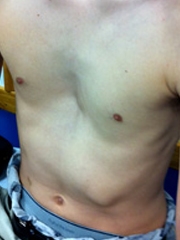
Pectus Excavatum Children S Hospital Of Philadelphia
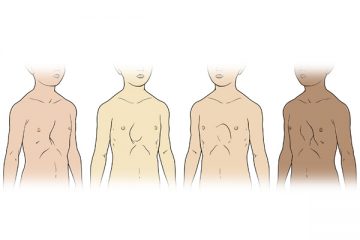
Pectus Excavatum Nuss Surgery Children S Health Orange County

Pectus Excavatum From A Pediatric Surgeon S Perspective Abstract Europe Pmc
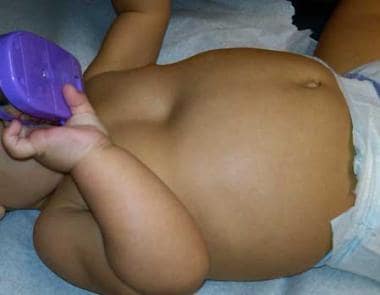
Nuss Procedure For Pectus Excavatum Background Indications Contraindications
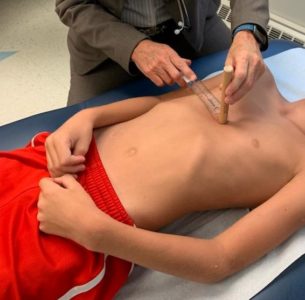
Should I Worry If My Child S Chest Is Sunken Cincinnati Children S Blog
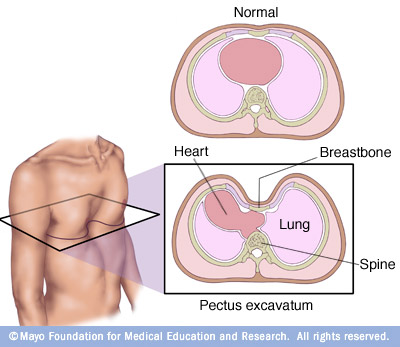
/GettyImages-955109626-4b3292cc1af6404d8e85bd1145bd1193.jpg)
